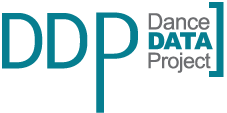By Dr. Stacy L. Smith, Marc Choueiti, Kevin Yao, Hannah Clark & Dr. Katherine Pieper
January 2020
Annenberg Inclusion Initiative
Each year, we examine the gender and race/ethnicity of directors working across the 100 top fictional films theatrically released in the U.S. A total of 1,300 of the most popular movies were included in the analysis, from 2007 to 2019. Put differently, 1,448 directors were assessed across two inclusion metrics (e.g., gender, race/ethnicity). Given the recent conversation surrounding women directors in the press, we conducted 3 additional analyses: a slate analysis of director inclusion across all the movies distributed by 8 major companies from 2015-2019; a pipeline analysis of female directors in entertainment (e.g., Sundance Film Festival, episodic television, Netflix movies), and an examination of female directors’ award nominations across the last 13 years at 4 organizations (Golden Globes, Academy Awards, DGA, Critics’ Choice). Findings are presented below for each section of the report.
Key Findings: 1,300 Top Grossing Movies from 2007-2019
Female Directors
A total of 113 directors were attached across the 100 top movies of 2019. A full 89.4% (n=101) were male and 10.6% (n=12) were female. This calculates into a gender ratio of 8.4 males to every 1 female. Across 1,300 films and 1,448 helmers, only 4.8% of directors were women. Has the prevalence of female directors changed over time? Yes. 2019 had a significantly higher percentage (10.6%) and number of female directors than 2018 (4.5%, n=5) or 2007 (2.7%, n=3). Of the major studios, Universal Pictures had the most female directors attached to the films they distributed (15 women), followed by Warner Bros. (13 women) and Sony Pictures Entertainment (11 women). The company with the worst track record for distributing films helmed by female directors was Paramount Pictures, which had only 3 pictures out of 134 movies distributed from 2007-2019 directed by a woman. Critical reception of male- and female-directed films was assessed using Metacritic scores. The average Metacritc score for films with only male directors attached (Mean=54.2, Range=9-100) was virtually identical to those with a female director attached (Mean=55.8, Range=22-95). The medians across these two groups were also evaluated, and revealed no difference between male- and female-directed films. Despite receiving the same average critical review, female directors were given substantially less access and opportunity than male directors to helm these highly visible films.
Underrepresented Directors
Of the 113 directors of 2019, a full 83.2% were white (n=94) and 16.8% (n=19) were underrepresented. This is substantially below U.S. Census, which is 39.6%. The ratio of white directors to underrepresented directors is 4.9 to 1. Only 13.5% of all helmers across the 13-year sample were from an underrepresented racial/ethnic group. 2019 (16.8%) was not meaningfully different from 2018 (21.4%) for underrepresented directors nor was it Annenberg Inclusion Initiative — 2 significantly higher than 2007 (12.5%). 2019 was practically different only from 2008, 2010, 2011, and 2012. Of the major studios, Universal Pictures has the highest number of underrepresented directors attached to their distributed films (39 directors) followed by Sony Pictures Entertainment (34 directors) and 20th Century Fox (29 directors). Disney has the worst track record (10 directors) from 2007 to 2019. No differences in average Metacritic scores were observed between white (Mean=54.2, Range=9-100) and underrepresented directors (Mean=54.9, Range=11-99). Medians also did not differ, with both groups having the same Metacritic mid-point in the distribution of their movies (54).
Women of Color Directors
Only 13 women from underrepresented racial/ethnic groups have directed any of the 1,300 top movies from 2007 to 2019. This is less than 1% of all directing jobs (n=1,448) whereas white males held 82.5% of jobs, underrepresented males 12.6% of jobs, and white females 3.9% of jobs. The ratio of white male directors to underrepresented female directors was 92 to 1. Yet, this group of women represents 20% of the U.S. population. Only two underrepresented female directors – Ava DuVernay and Jennifer Yuh Nelson – have helmed more than one movie appearing across the 1,300 films and 13-year sample. Four of the women of color were added to the list in 2019 (i.e., Kasi Lemmons, Melina Matsoukas, Roxann Dawson, Tina Gordon). No company has distributed the stories of more than 4 underrepresented female directors across 13 years. The average Metacritic score was higher for stories directed by women of color (Mean=62.5, Range=44- 89) than those stories directed by white males (Mean=54.2, Range=9-100), white females (Mean=54.3, Range=22-95), or underrepresented males (Mean=54.3, Range=11-99). The medians in the distributions followed the same pattern. Clearly, there is a major disconnect between hiring practices in Hollywood and who has the cinematic heft to carry stories.
Read the full study here.





Leave a Reply
Want to join the discussion?Feel free to contribute!